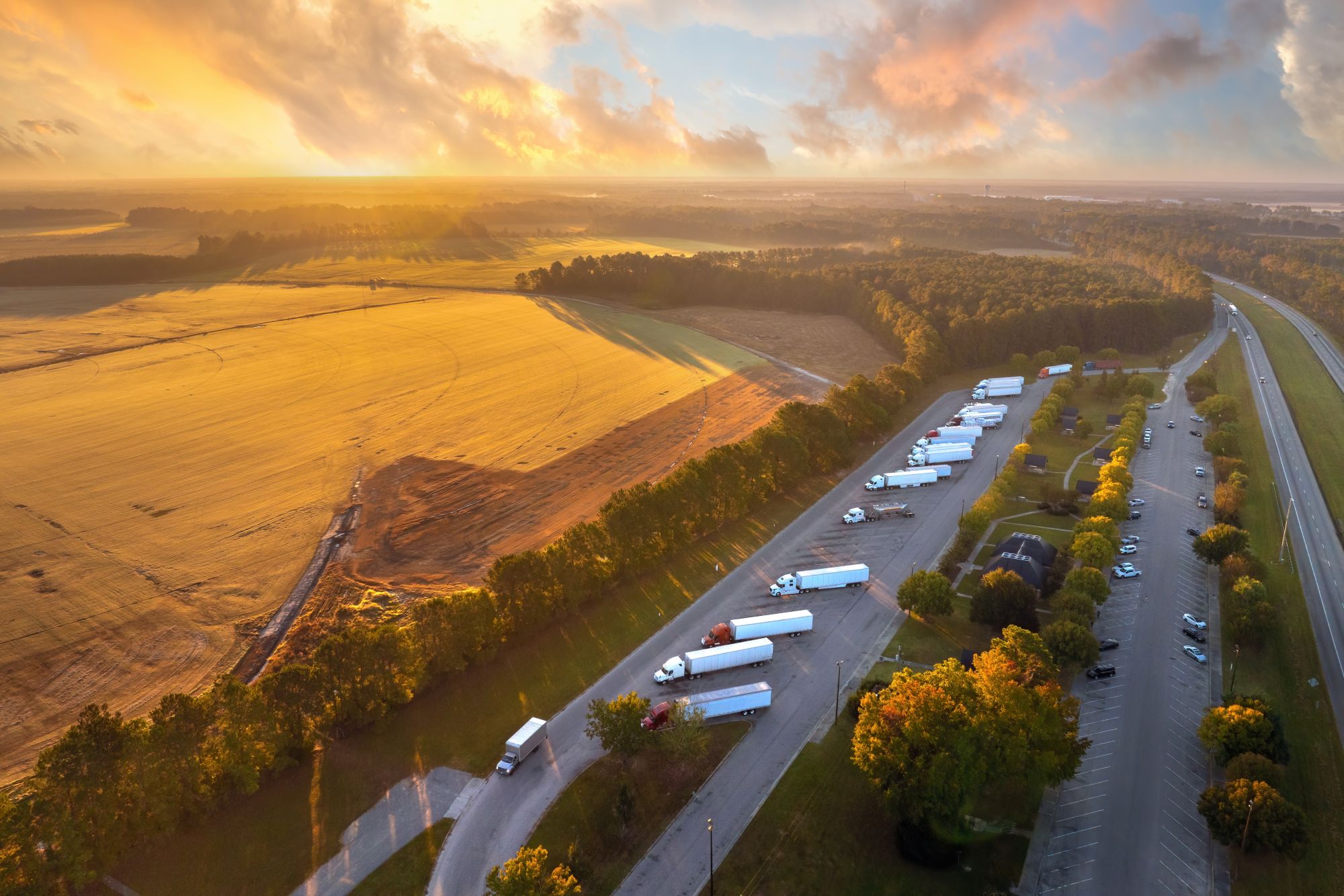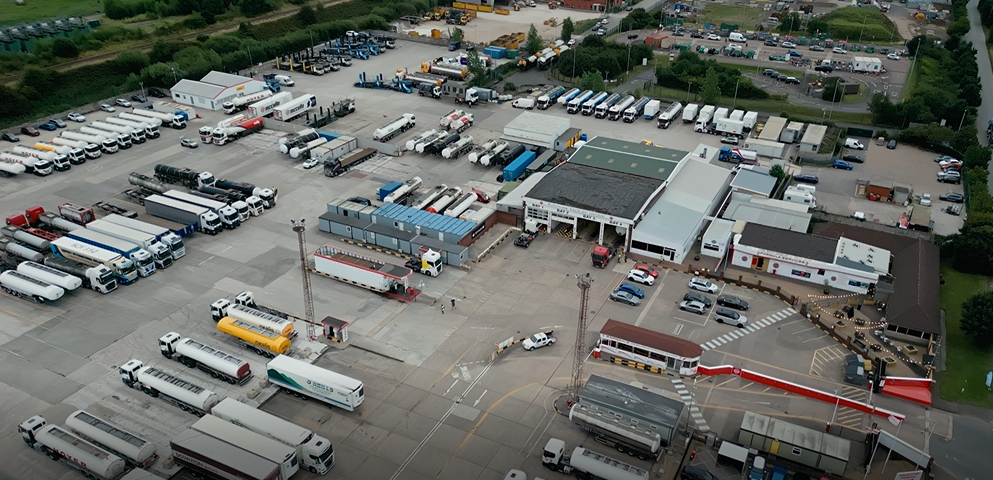
Miranda Blake
Prácticas de conducción seguras: Directrices esenciales para camioneros de larga distancia
Creado: 15/01/2025
•
Actualizado: 15/01/2025
Como conductor de camión, es fundamental estar siempre seguro al volante. Pero, con las condiciones meteorológicas extremas y las largas rutas por Europa, ¿cómo puede garantizar un impacto positivo?
En este artículo esbozamos las pautas esenciales para que pueda dar prioridad a su seguridad y a la de los demás.
Planificación y preparación
En primer lugar, debe asegurarse de tenerlo todo preparado antes de ponerse en marcha.
Disposición del viaje
Traza cuidadosamente tu ruta con antelación, teniendo en cuenta factores como las condiciones meteorológicas, la construcción de la carretera y los peligros potenciales. Es una buena idea utilizar tecnologías como el GPS y las aplicaciones meteorológicas para mantenerse informado sobre el viaje. También debes planificar paradas para descansar, repostar y comer. De este modo, te asegurarás de mantener un horario coherente sin comprometer la seguridad.
Inspecciones de vehículos
Antes de salir a la carretera, realice una inspección exhaustiva de su camión antes del viaje. Compruebe lo siguiente:
● Inflado y desgaste adecuados de los neumáticos
● Frenos para un rendimiento óptimo
● Luces y señales de funcionalidad
● Niveles de líquidos (aceite, refrigerante, líquido de frenos, etc.)
● Espejos para un ajuste correcto
● Sujeción de la carga
Si evalúa periódicamente estos aspectos, podrá detectar posibles problemas antes de que se conviertan en problemas graves.
Prácticas de conducción segura en carretera
Ponerlas en práctica es igual de crucial una vez que has arrancado el motor.
Gestión de la fatiga
Este es un factor de riesgo importante para los camioneros de larga distancia como usted. Para combatirlo, le recomendamos:
● Cumplimiento de las normas sobre horas de los conductores
● Tomar descansos regulares - incluso si no se siente cansado.
● Reconocer los signos de fatiga y pararse a descansar cuando sea necesario.
● Mantener un horario de sueño constante cuando sea posible.
Defensive driving
También conviene adoptar una mentalidad de conducción defensiva para anticiparse a los posibles peligros y evitarlos. Algunas ideas son:
● Garantizar una distancia de seguimiento segura
● Ser consciente de los puntos ciegos
● Evitar los cambios frecuentes de carril y señalizar con suficiente antelación.
● Ajustar la velocidad en función de las condiciones de la carretera y del tiempo.
● Estar preparado para las acciones de otros conductores
Speed management
Con el punto sobre mantener una velocidad segura y constante, deberías:
● Respete siempre las restricciones, especialmente en zonas con límites de velocidad reducidos para camiones.
● Reduzca la velocidad en las curvas, en las zonas de obras y en condiciones meteorológicas adversas.
● Utilice los frenos auxiliares en las bajadas pronunciadas para evitar el sobrecalentamiento.
Mantenimiento y seguridad de los vehículos
Otra cuestión importante para la seguridad del transporte de larga distancia por carretera es el mantenimiento y la protección del camión.
Mantenimiento regular
Deberá seguir un calendario estricto para mantener su vehículo en óptimas condiciones. Por ejemplo, a través de:
● Realizar cambios frecuentes de aceite y revisiones de líquidos.
● Inspección y mantenimiento del sistema de frenos
● Control de la presión y el estado de los neumáticos
● Mantener el sistema eléctrico en buen estado de funcionamiento.
● Abordar cualquier problema con prontitud para evitar averías en la carretera.
Cargo security
Del mismo modo, será clave garantizar la seguridad de tu carga. Para ello:
● Utilizar amarres y dispositivos de sujeción adecuados.
● Distribuir la carga uniformemente
● Volver a comprobar la sujeción de la carga durante las paradas, especialmente tras frenazos bruscos o giros bruscos.
Truck security
Con proteger su vehículo encima de su carga, se le recomienda:
● Aparca en zonas bien iluminadas y de alta seguridad cuando pares a descansar.
● Emplear dispositivos antirrobo y mecanismos de cierre.
● Mantente alerta e informa de cualquier actividad sospechosa.
Conocimiento del tiempo y del estado de las carreteras
Como camionero de larga distancia, también tendrás que prepararte para diversas condiciones relacionadas con el clima y las carreteras. Por ejemplo:
● Mantenerse informado sobre las previsiones a lo largo de su ruta
● Ajustar la conducción o retrasar el viaje en los elementos más extremos.
● Llevar el equipo necesario (cadenas, kit de emergencia, etc.) para distintas condiciones meteorológicas.
● Proceder con mayor precaución en zonas desconocidas o propensas a peligros específicos.
Salud y bienestar
Mantener una buena salud es igual de importante para conducir con seguridad. Por tanto, asegúrese de que:
● Hazte revisiones médicas periódicas y obtén los certificados médicos necesarios.
Sigue una dieta equilibrada y mantente hidratado.
Hacer ejercicio siempre que sea posible, aunque sólo sea estirarse durante los descansos.
● Gestionar el estrés mediante técnicas de relajación o pasatiempos durante el tiempo de inactividad.
Conducción segura con SNAP
Otra forma de aumentar la seguridad es a través de nuestra aplicación intruck app. Con ella, los camioneros como usted pueden pagar diversos servicios, como aparcamiento, lavado, combustible y otros. Al eliminar las transacciones en efectivo, se limita cualquier distracción.
Además, muchos aparcamientos cuentan con medidas de seguridad mejoradas, por lo que tendrá la seguridad de que su vehículo está a salvo mientras se toma los descansos necesarios. Y como nuestra aplicación permite a los usuarios reservar plazas de aparcamiento con antelación, tendrás la tranquilidad de que habrá un lugar seguro para descansar después de largas horas en la carretera.
Recuerde: las prácticas de conducción segura no son sólo directrices; son principios esenciales que todo camionero de larga distancia debe adoptar como parte de su ética profesional. Si da prioridad a la seguridad mediante una planificación cuidadosa, una conducción atenta, un mantenimiento adecuado y el uso de tecnología como intruck, podrá reducir significativamente los riesgos asociados a su exigente profesión.
Si desea más información, póngase en contacto con nuestro equipo en el teléfono +44 (0)1603 777242.



